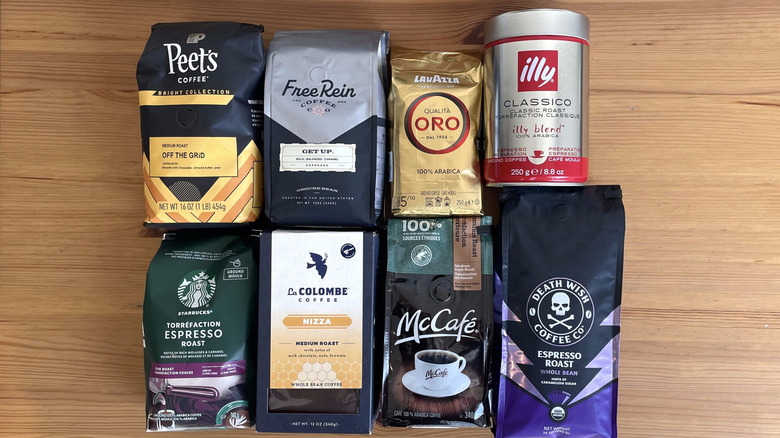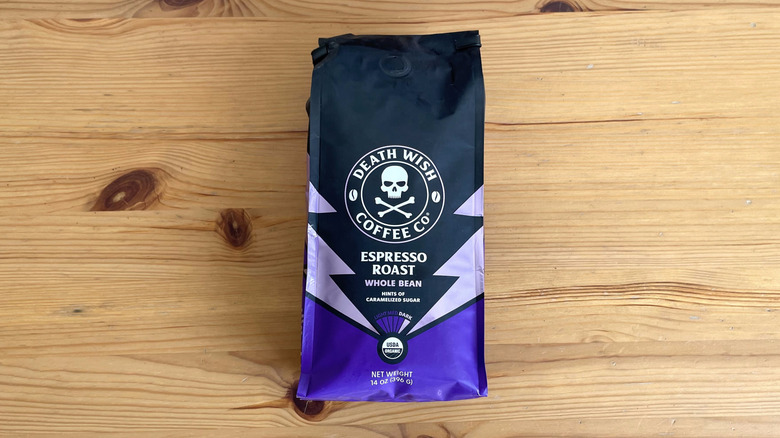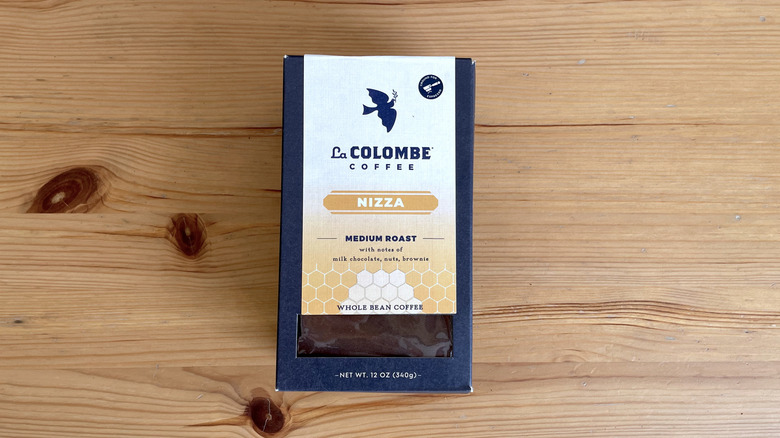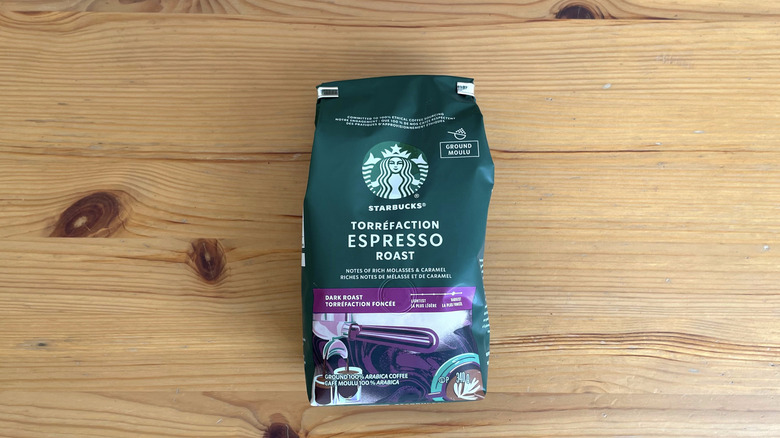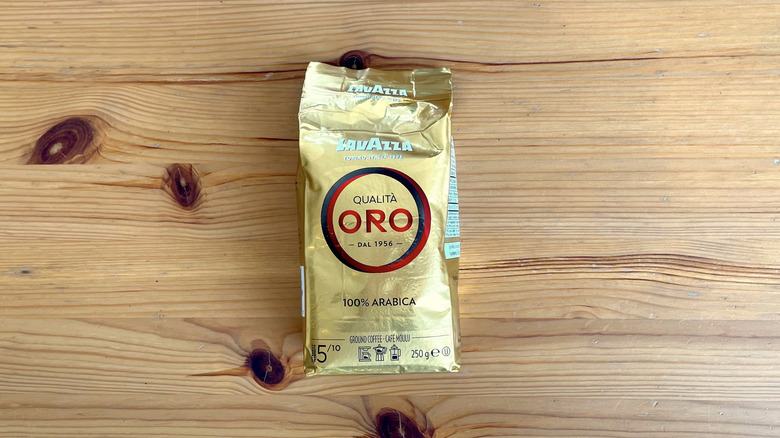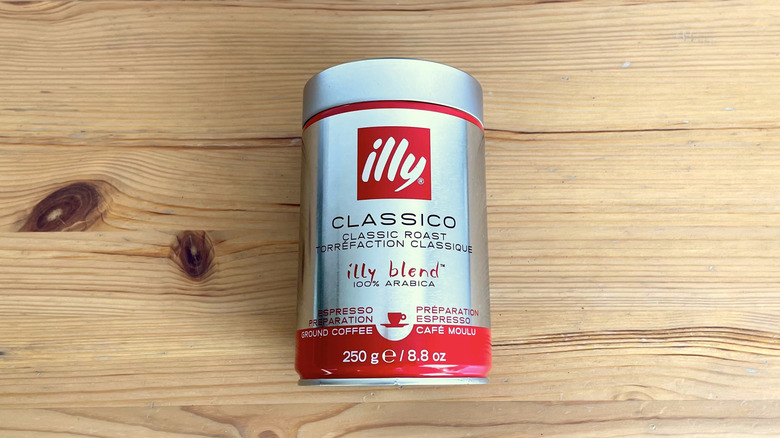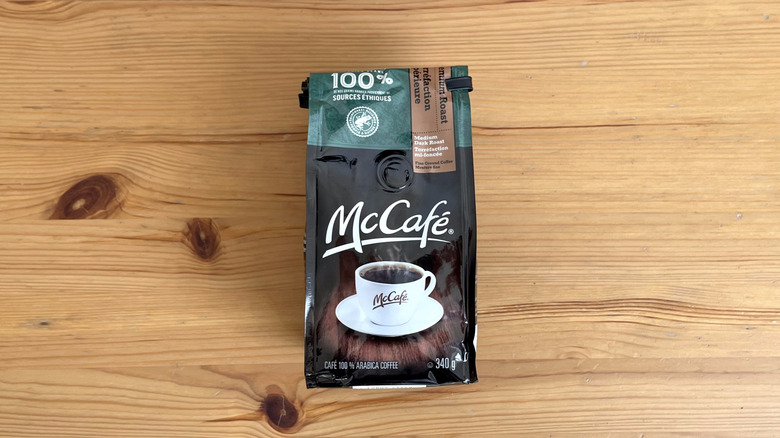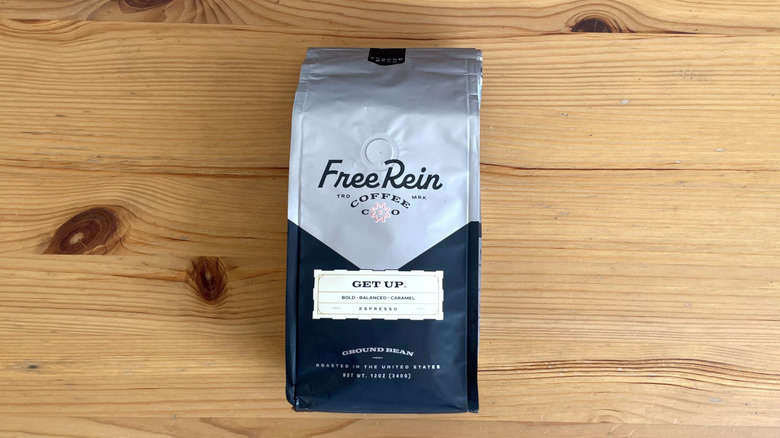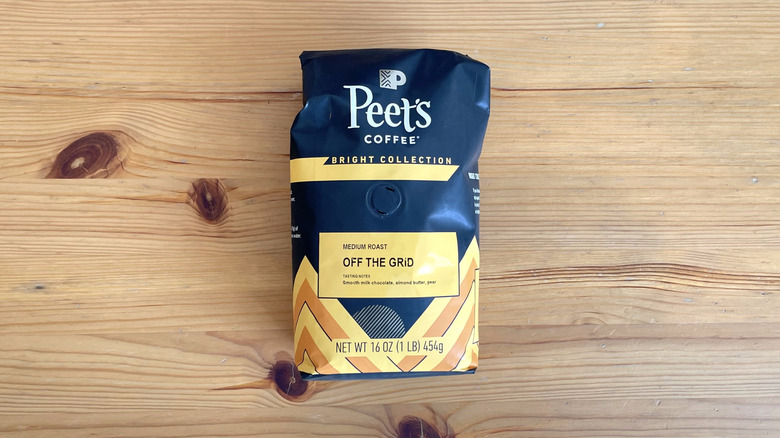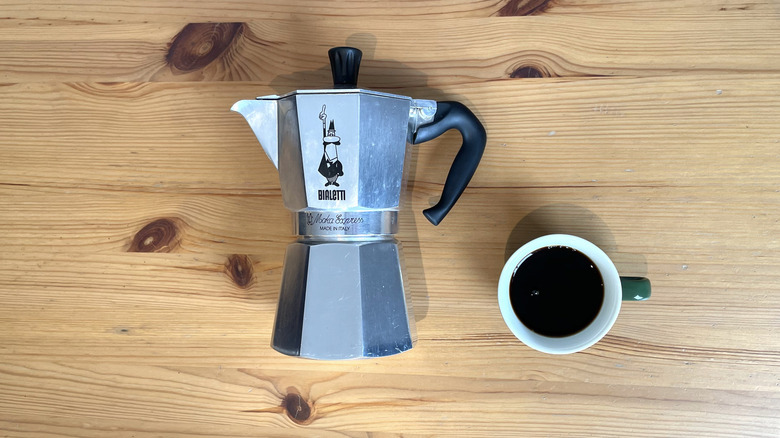8 Store-Bought Espresso Beans, Ranked
The grocery store coffee aisle is rife with options from dozens of roasters, giving consumers access to an entire world of coffee at their fingertips. Varying price points, bag sizes, roast styles, and, of course, differing quality, is all there. It can make the simple idea of buying some coffee a crippling decision, with the marketing and branding often leading many to their final decision. There may also be a connotation by snobby coffee drinkers that grocery store coffee is somehow inferior, and that buying specialty coffee at indie cafes is somehow better. This isn't true. Many high-volume modern roasters curate beans for a wide range of tastes and preferences, often at affordable prices. Of course, some grocery store stuff is simply crap, no doubt about it. There's a lot to take into account. To save you time and pain and perhaps even inspire, I have ranked these grocery store espressos after some rigorous testing.
These coffees are available nationally at large retailers and encompass a wide range of styles. Many will ring a bell, while some might not be on your radar. The ones that are already in your cupboard are probably there for a reason; it's good stuff, it's easy, it's familiar. But if a roaster here is new to you, it could be an opportunity to branch out and try something different. Ranking these espressos through heavily scrutinized tasting was fun, with a few of them actually shocking me. Go grab a coffee, and read on for some insights!
8. Death Wish
Well, here we are, dead last with Death Wish. I have to admit I had never seen this brand before. The over-the-top marketing is hard to ignore, though, and I was curious. Out of all the coffees in our list, this was the only certified organic one, and it was the darkest roast by a very, very long shot. The bag says, "intensely strong coffee" and shows on the roast level diagram that it is the maximum roast degree offered. If you happen to be the kind of person who has an affinity for strong coffee and you enjoy coffees that only taste of roast, then this might be up your alley. But I don't understand what the term "strong" is supposed to mean, as coffee strength is up to the user, and roast artifact is different. Tasting roasty notes doesn't make a coffee stronger, nor does it increase caffeine presence.
You probably know how I feel about this coffee already: I did not like it whatsoever. I found it had zero redeeming qualities; all I could taste was roast. The aroma was like opening a can of fresh tennis balls with hints of fresh brownies. It was way too bitter, and I found it almost impossible to see past that. It did have some vague cacao and Whoppers notes, but the overly assertive roast taste destroyed my palate. This would need an obscene amount of cream and sugar for me to drink it. Hard pass here, folks.
7. La Colombe
Out of all these espressos I tried, this was the one I was pinning my hopes on as a potential heavy hitter. I know La Colombe very well and have enjoyed its coffee many times over the years, with a deep respect for Todd Carmichael, the CEO and co-founder of this Philadelphia-based roaster. Sadly, in 2023 it was bought up in a $900 million deal, and I can't help but think that those tasty brews I enjoyed years ago are never to return. Maybe they could be considered a victim of their own success. Big coffee isn't evil and has its place in the market, but I think I was expecting a more artisan touch here, perhaps lofty or silly given the scale of the business. But I digress.
Here we have La Colombe's Nizza blend, a mix of East African and Latin American beans, roasted to a medium level. It was roasted and ground for espresso, and visually, next to Peet's, it was the lightest roast level overall. With tasting notes on the box of milk chocolate, nuts, and brownie, I was excited to dive in. During the brew, aromas of dark chocolate and stewed cherry hit my nose. The tasting notes in my coffee-stained notebook read 90% dark chocolate, almond milk, and savory or brothy. But it tasted very hollow and weak, seemingly aged-out and stale, lacking in body and sweetness with a dry finish. I wanted so bad to like this one but didn't. Sorry, Todd!
6. Starbucks
You can't make a list of grocery store espressos and not expect to see the crowned mermaid, in all her glory, making an appearance. Starbucks, in its ubiquity and utter popularity, is always there for you. It has a massive chunk of the coffee market — and rightly so, as it really helped to popularize all the European-style drinks we love, especially its new cortado. For this test, I grabbed its espresso roast in a pre-ground format, which was a five out of six on the brand's roast scale, from light to darkest. Though, I found it to be very, very dark. Super dark roasted coffee often has a smoky taste and is often preferred by roasters who source cheap, low-quality raw beans as a way to mask their shortcomings. To wit, it's something corporations might do to maximize profit. However, I would never judge anyone who likes Starbucks because I have drunk it before and have enjoyed it.
Did I enjoy this coffee? Not so much, unfortunately. On the nose, it had a rubber tire smell, also reminding me of that whiff from a box of new sneakers. In the cup, it had a very low acidity, but out of all of the cups, it was one of the better-balanced ones. An astringent intensity lingered on the palate, with tons of roast notes dominating; I couldn't see a window into the terroir at all. It tasted the most like "coffee," if that makes sense. It gets the job done, but it is forgettable in the end.
5. Lavazza
The first half of espressos in this list are all about trying to meet expectations, with a few missing the mark. There are some brands that you buy and you know what you're getting into, with Lavazza being one of them. It is in every middle-of-the-road restaurant's espresso grinders, airport lounges, office kitchens, and your local grocery store. This classic Italian brand has been around since 1895, and it has a range of espressos, with this Oro (gold in Italian) line being its top-tier stuff. It's a few dollars more than its entry-level espresso, and I must say that it is worth it. Its cheapest coffee is truly awful and should be avoided.
This was a medium roast and a blend of South and Central American beans ground very fine. Brewing this coffee took me back to my university days, and while it's not a coffee I would ever seek out, it gets the job done. During the brew time on my stove, it slowly permeated smells of oatmeal and bread, with a hint of apple blossom. The coffee tasted like sponge toffee, but it was very flat, with a slight chemical flavor and an artificial sweetener note going on. (No, I didn't add any Splenda!) The finish was drying and bitter, and as it cooled, it took on papery, wet cardboard flavors. However, that caramel sweetness we all crave in coffee — the baseline — was in there. With some milk and sugar, this would slap, as the kids say.
4. Illy
We've all seen those timeless and classy aluminum tins of Illy at the store, a household name to espresso sippers in Europe, with decent brand recognition here, too. Coffee drinkers of all walks should know this: Illy has a coffee university called Università del Caffè headquartered in Trieste, Italy, with 23 adjunct branches around the world. Simply put, Illy sees the value in coffee R&D and has been pushing the boundaries for years now. Its espresso may cost a few bucks more, but its consistency, quality, and stellar packaging justify the cost. Here, I opted to test Illy's Classico roast, a pre-ground espresso that I would characterize as medium roast. The grind is fine and almost powdery, perhaps slightly too fine for a moka pot preparation, but serviceable. This simply meant a slightly longer brew time as the water hits more resistance, before blasting through the puck of coffee.
While percolating on my stovetop, I was hit with aromas of brioche, gingerbread, and nutmeg. These warming spices and cozy smells were quite nice and unexpected. In the cup, I had notes that mirrored the coffee fragrance in addition to creme brûlée and dark toffee. The overall profile was a bit subdued, and the espresso didn't linger on the palate. There was a slight papery note and slight bitterness on the finish — though, surely a dash of cream would remedy that. Overall, this was what I expected: a quintessentially classic espresso, just like the Classico name suggests.
3. McCafé
Having been on countless road trips and being a caffeine addict who cannot go a day without coffee, lest I suffer debilitating headaches, I've had McDonald's coffee before. It scratches that itch and gets me realigned and settled into the matrix. Going strong since its launch in the U.S. in 2009, McDonald's McCafé line supplied by Gaviña Gourmet Coffee is ubiquitous at this point, chiseling market share off of other giants like Dunkin'. Shockingly, I chose McCafé as my third favorite espresso and never would have thought this to be an outcome. But here we are. I am always open-minded and objective, despite the fast-foodification of coffee not making me feel great as someone with a stake in the industry. Yet this coffee was delicious and deserved to be sitting nicely in third place.
Unfortunately, there isn't a ton of transparency here, so I'm not sure of the provenance of the beans used. The roast was medium-dark, though it did skew more toward medium, and it was pre-ground to a fine level, perfect for moka pot brewing. While piping hot, I leaned over the cup and inhaled enticing aromas of cherry jam and caramel. The cup profile was remarkably balanced, which is of the utmost importance. My tasting notes were burnt toffee, malt chocolate, and nougat with a round and pronounced sweetness and clean finish. The acidity was very low, yet crisp. I never thought I would be sipping on some McCafé in my kitchen, but I was quite happy to do so here. Very tasty stuff!
2. Free Rein
I'm not going to lie. This was my first time trying Free Rein, and I was impressed. To those unfamiliar, this roastery was co-founded by "Yellowstone" star Cole Hauser along with three other partners. A real cowboy or Wild West vibe is going on with the brand story, yet the bag designs are mature and classy. But more importantly, let's discuss the coffee. Get Up was pre-ground and roasted as espresso, with notes on the bag that say "bold, balanced, caramel." All were accurate, if vague. This was a medium roast and perhaps ever-so-slightly too coarse for a moka pot grind. Despite this, the coffee came out lovely.
The first thing I noticed when brewing this coffee was the pleasant aroma rising from my moka pot. On the nose, I was getting hints of berries and stewed apple with a slight herbaceous note going on. On first sip, I noticed how well balanced it was with great flavor clarity — something us coffee professionals lust after. There were notes of nougat and cashew butter up front, followed by a pastry-like quality and chocolate wafer taste — all delicious stuff, all in harmony, with a low acidity. There was a tiny amount of bitterness on the finish, but it was so slight that I couldn't deduct many points. As it cooled, the structure of the coffee remained intact, emblematic of good-quality raw beans, combined with rock-solid roasting. Free Rein, you now have my attention. Great job here!
1. Peet's Coffee
I've had Peet's many times before and would never have thought I was going to like this coffee as much as I did. Off The Grid is part of Peet's Bright Collection, which includes coffees that have a slightly more fruit-forward profile with some acidity in the mix. Acidity in coffee is a hard sell for some, and I get that, but it's important to realize that coffee is a tropical fruit at the end of the day. This coffee is an omniroast, meaning it works as filter or espresso, and it is a blend comprised of beans from Colombia and El Salvador.
When I brewed this coffee, it permeated a nice aroma over the stove. I got floral notes with warming spices, toffee, and that unmistakable smell of hot, hand-rolled ice cream waffle cones. Very nice. In the cup, I was getting some intense sweetness coating the palate, reminiscent of milk chocolate and stewed pears. The coffee was also nutty and very well balanced. The acidity was low and in check. The finish was clean — lingering on the palate — yet there was no bitterness to speak of. The roast was perfect — no roast artifact or overpowering roast flavor whatsoever. I kept coming back to it, and even after testing so many coffees at once, hammering my palate into submission while twitching from over-caffeination, I almost made another cup. It's that good. For all of these reasons, I chose Peet's as the best of the bunch.
Methodology explained
Here's a bit about my methodology and why you should trust my assessment. I have worked in the coffee industry for almost 13 years now, doing everything imaginable. As a coffee professional who has worked for a renowned roaster and green coffee importer, a large chunk of my days was spent tasting coffees. We call this process cupping, which is a qualitative and quantitative assessment that scores coffee on a scale of 0 to 100 through a globally standardized protocol while using specific language to describe the flavors. If it sounds nerdy, you're right. I am the definition of a coffee geek — I live and breathe coffee — so I wanted to put my expertise to use here.
Each espresso I tested here was brewed using filtered water. Next, the ratio of water to coffee was kept the same to ensure consistency in brew strength, from cup to cup. I used my trusty old-school moka pot for inclusivity and ease of use, as many home coffee drinkers don't have fancy espresso machines, nor are they necessary to get good extractions.
To make sure the coffee was getting its fair shake, each cup was unadulterated — no milk or sugar or flavorings — and assessed black. I looked at what the most important factors are when judging a coffee: balance, sweetness, terroir, roast levels, freshness, finish, and aroma. If I had to pick the most important factors, it would be balance and sweetness. When I train baristas, I always tell them to prioritize balance and sweetness over everything; if a drink profile is uneven and dull, it will stick out to a customer in a bad way. I tasted the coffees hot, lukewarm, and at room temperature because as they cool, the flavors and character can change, and a bad coffee will often show its true colors while tepid; a great coffee will taste good through all temperature ranges.
